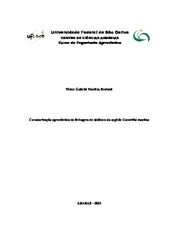Caracterização agronômica de linhagens de abóbora da espécie Cucurbita maxima
Abstract
The species Cucurbita maxima is used as a female parent in the production of Tetsukabuto pumpkin, one of the vegetables with the highest economic value found in our country. To agronomically characterizing the lines of a genetic improvement program for this vegetable is important to guide future crosses and obtain new hybrids. The objective of this work was the agronomic characterization of C. maxima strains from the germplasm bank of the Federal University of São Carlos (UFSCar), for the future attainment of Tetsukabuto hybrids. The experiment was completely randomized, in the field, with sprinkler irrigation. Spacing used was one meter between plants and three meters between rows, with four repetitions, each consisting of eight plants, the evaluations used only the four central plants. Pollination, both self-fertilization and crossing, were carried out 40 days after sowing, with 90 days after sowing the evaluations of plants and fruits began. Evaluations were performed using Scott-Knott statistical analysis at 5%. It can be seen that the 10642 RC lineage obtained the smallest plant length, being statistically different from the other treatments, with an average productivity of 9.28 tons per hectare, statistically differing only from the 10633 RC lineage, which presented an average of 19.29 tons per hectare. In this way, the 10642 RC lineage presented superior agronomic characteristics and could be used in the combination of new hybrids. Because they have compact plants, there is the possibility of obtaining a hybrid of Tetsukabuto with short branches in the future.
Collections
The following license files are associated with this item:

